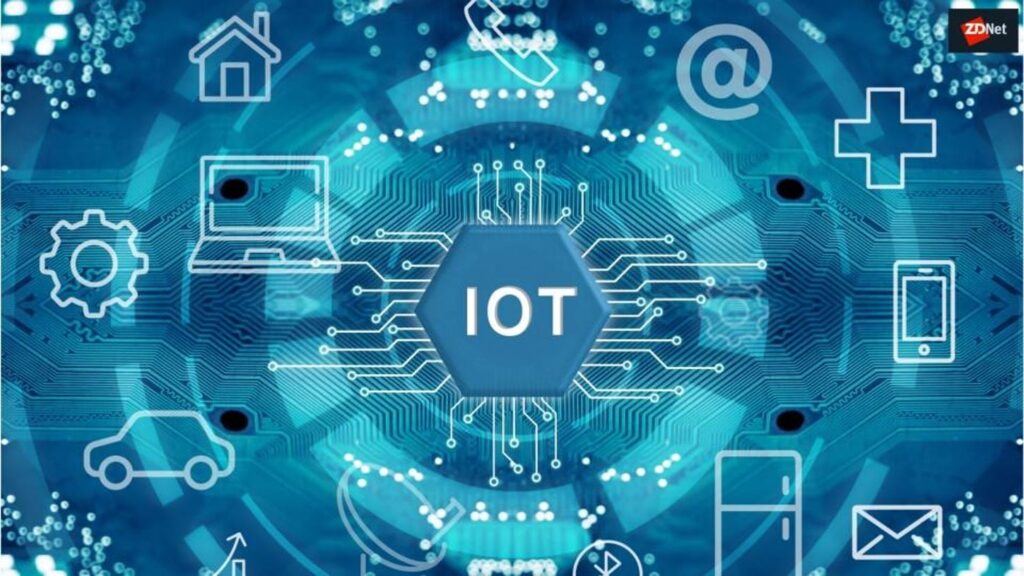IoT has revolutionized the healthcare industry, improving efficiency, accuracy, and patient outcomes. Remote patient monitoring allows doctors to detect early warning signs and reduce hospital stays. IoT devices help patients adhere to treatment plans and medication schedules. Hospitals can optimize resource utilization through IoT, preventing stockouts and reducing wastage. IoT facilitates faster emergency response times by transmitting real-time patient data to medical professionals. Telemedicine enables remote medical consultations, reducing the risk of contagion. IoT transforms hospitals into smart facilities and enables remote surgery. Wearable devices continuously monitor health parameters, facilitating early detection of abnormalities. Challenges include data security, integration, and regulatory compliance. Overall, IoT has limitless potential to revolutionize healthcare.
The Power of IoT in the Healthcare Industry: Innovations and Applications
Introduction
The Internet of Things (IoT) has revolutionized numerous industries, and the healthcare sector is no exception. IoT in healthcare has opened up new possibilities, transforming the way medical professionals provide care and how patients receive it. With the increasing popularity and adoption of IoT devices and technologies, the healthcare industry is experiencing a significant paradigm shift that brings improvements in efficiency, accuracy, and patient outcomes.
Benefits of IoT in Healthcare
The integration of IoT in healthcare offers a plethora of benefits that enhance patient care, streamline operations, and enable proactive treatment approaches. Some of the key advantages include:
Remote Patient Monitoring
IoT devices enable healthcare practitioners to remotely monitor patients, particularly those with chronic conditions. These devices can collect and transmit valuable data such as heart rate, blood pressure, glucose levels, and other vital signs. By continuously monitoring patients, doctors can detect early warning signs, intervene promptly, and minimize hospital stays.
Improved Treatment and Medication Adherence
IoT devices can help patients adhere to treatment plans and medication schedules. Smart pill bottles, for instance, send reminders to patients’ smartphones when it’s time to take their medication. Moreover, wearable devices like fitness trackers can collect data on exercise, sleep, and nutrition, providing healthcare professionals with valuable insights that can contribute to personalized treatment plans.
Efficient Resource Management
Hospitals and other healthcare facilities can leverage IoT to optimize their resource utilization and maintain a high level of operational efficiency. Connected devices can monitor equipment usage, track inventory levels, and automatically order supplies when necessary. This not only prevents stockouts but also reduces wastage and ensures the availability of critical resources when needed.
Enhanced Emergency Response
IoT devices can facilitate faster emergency response times. For example, smart ambulances equipped with IoT technology can transmit real-time patient data to the hospital while en route, allowing medical professionals to prepare for the arrival of critical patients. Similarly, wearable devices can automatically trigger emergency alerts when a person’s vital signs indicate a potential health crisis.
Innovative IoT Applications in Healthcare
Telemedicine
Telemedicine, enabled by IoT devices, allows patients to access medical consultations remotely. IoT-connected video conferencing tools enable patients to communicate with doctors and receive diagnosis and treatment advice without the need for in-person visits. This application has become particularly relevant during the COVID-19 pandemic, reducing the risk of contagion and easing the burden on healthcare facilities.
Smart Hospitals
IoT can transform traditional hospitals into smart, interconnected facilities. IoT sensors placed throughout the hospital can monitor various parameters, including temperature, humidity, air quality, and occupancy levels. This data can be analyzed in real-time to facilitate efficient facility management, maintain optimal conditions for patients and staff, and detect potential issues before they escalate.
Remote Surgery
IoT has paved the way for remote surgery, allowing surgeons to operate on patients located in different geographical locations. Advanced robotic devices controlled by skilled surgeons can remotely perform surgeries with precision and accuracy, reducing the need for patient travel and bringing specialized care to remote and underserved areas.
Health Monitoring Wearables
Wearable devices such as smartwatches, fitness bands, and ECG monitors have gained popularity for their ability to continuously monitor health parameters. These devices can track heart rate, sleep patterns, daily activity levels, and more. The collected data can be synchronized with mobile apps or cloud servers, providing healthcare professionals with a comprehensive overview of a patient’s health and facilitating early detection of any abnormalities.
Challenges and Concerns
While IoT technologies present numerous advantages, there are also challenges and concerns that need to be addressed:
Data Security and Privacy
As patient data becomes increasingly digitized and transmitted through various IoT devices, ensuring data security and privacy becomes a critical concern. Robust encryption, strict access controls, and secure data transmission protocols are necessary to protect sensitive healthcare information from unauthorized access or cyberattacks.
Data Integration and Interoperability
Integrating data from various IoT devices and ensuring interoperability among different systems can be complex, primarily due to the lack of standardized protocols and formats. Effective data integration is crucial for healthcare professionals to gain a holistic view of patients’ health and make accurate treatment decisions.
Regulatory Compliance
IoT applications in healthcare must comply with stringent regulations such as HIPAA and GDPR, ensuring patient privacy and data protection. Complying with these regulations while leveraging the potential of IoT can be challenging, requiring healthcare organizations to implement robust security measures and establish stringent data governance policies.
Conclusion
The power of IoT in the healthcare industry is undeniable. From remote patient monitoring to telemedicine and smart hospitals, IoT innovations are transforming the way healthcare is accessed and delivered. While challenges exist, overcoming them will enable the healthcare sector to make significant strides in improving patient outcomes, optimizing resource utilization, and providing more personalized and efficient care. As IoT continues to evolve, its role in healthcare is likely to expand, revolutionizing the industry in unprecedented ways.
